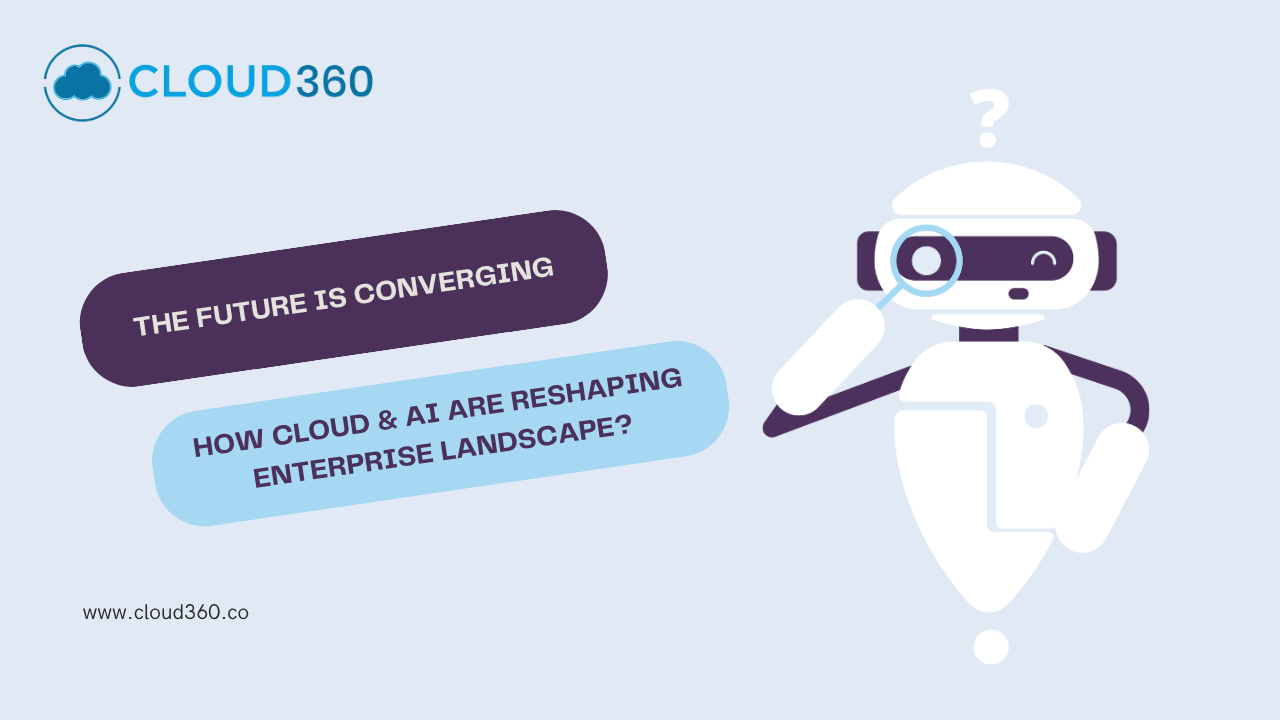Image Credit: Cloud360 Training
By Navneet Kumar, CEO & Co-founder, Cloud360 Co.
As we move deeper into the digital age, the convergence of cloud computing and artificial intelligence (AI) is not just a trend—it's the foundation of the next technological revolution. At Cloud360 Co., we are fortunate to stand at the intersection of this transformation, working alongside forward-thinking enterprises that are redefining how business is done.
Today, I want to share some key innovations we're seeing in the cloud and AI space, and how they're shaping the future for enterprises across industries.
1. Cloud-Native AI is Becoming the Default
In the early days of AI adoption, companies often treated AI models and cloud infrastructure as separate initiatives. That era is over. We’re witnessing a major shift toward cloud-native AI, where models are developed, deployed, and scaled directly within cloud ecosystems.
Thanks to hyperscalers and cloud-native platforms like Kubernetes, serverless architectures, and containerized ML ops, AI workloads can now be deployed globally with a few clicks. The benefits? Faster innovation cycles, better cost control, and more agile decision-making.
At Cloud360, we’re helping customers abstract complexity through fully managed AI infrastructure built for speed, scalability, and continuous learning.
2. AI-Augmented Cloud Operations (AIOps) Are Gaining Momentum
Managing sprawling cloud environments is becoming more complex than ever. Enter AIOps—a game-changer for cloud efficiency. By leveraging machine learning, AIOps platforms proactively identify anomalies, predict outages, and automate resolutions before they become critical.
We're seeing enterprise CIOs adopt AIOps to not only optimize performance but to also reduce operational overhead and enhance security posture. It's the difference between being reactive and being predictive.
This trend isn’t just about efficiency—it’s about resilience.
3. Generative AI Is Driving Industry-Specific Cloud Solutions
With the rise of generative AI, we're witnessing the emergence of industry-tuned AI models, embedded directly into cloud platforms. Whether it's GPT-powered customer service in financial services, or multimodal diagnostic tools in healthcare, vertical-specific AI capabilities are unlocking new business models.
4. Data Gravity and the Rise of Multicloud Intelligence
With AI demanding more data than ever, the concept of data gravity—where data attracts services and applications—has become a critical factor in cloud architecture.
As a result, more enterprises are adopting multicloud strategies to keep their data closer to AI processing engines, ensure regulatory compliance, and avoid vendor lock-in. But it’s not just about diversification—it's about intelligence.
Multicloud orchestration tools, powered by AI, are now enabling real-time decision-making across providers, unlocking a level of agility and insight we couldn’t have imagined five years ago.
5. Responsible AI and Cloud Governance Are Top Priorities
With great power comes great responsibility. As AI capabilities scale, so too must our commitment to ethical AI use, transparency, and regulatory compliance. Enterprises are no longer just asking “can we do this?” but also, “should we?”
Cloud platforms are evolving to include built-in AI governance, model explainability tools, and compliance automation features. At Cloud360, we’re embedding responsible AI principles into every layer of our stack—ensuring our clients’ innovations are secure, fair, and trustworthy by design.
What’s Next?
The convergence of AI and cloud is no longer just a competitive advantage—it’s a necessity. But embracing this future requires more than adopting new technologies. It demands a culture of innovation, a mindset of continuous learning, and partners who understand both the opportunities and the risks.
At Cloud360 Co., we remain committed to empowering enterprises to thrive in this dynamic era—through intelligent infrastructure, cloud-native AI, and ethical innovation.
Because the future isn’t waiting—and neither should you.
Let’s shape what’s next—together.


